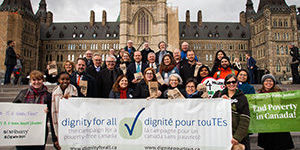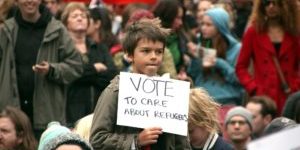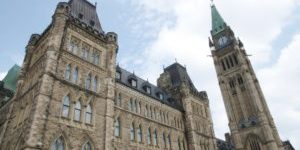Tune into Question Period in the House of Commons and you will periodically hear the words “close the loophole” being thrown around in heated debates concerning refugee claimants. It is a catchphrase used by some Members of Parliament to describe the changes they wish to see in the Canada-U.S. Safe Third Country Agreement (STCA). Its usage has become increasingly popular in the House and has yielded headlines across the country. Yet, it remains unclear what supporters of the loophole narrative are trying to propose.
The alleged loophole being presented refers to the ability for individuals coming through the Canada-U.S. border to make a refugee claim between official ports of entry after being intercepted by the RCMP. These potential claimants are referred to by the Immigration and Refugee Board of Canada as irregular border crossers. The loophole narrative essentially asks Canada to criminalize the right to make a refugee claim under the STCA.
But the way this would play out in terms of policy would require Canada to designate the entire border as an official port of entry. This proposition has several implications and is far more complicated than the way “closing the loophole” is presented. As such, there have been mixed reviews on what exactly this would entail both financially and legally.
Maxime Bernier, now leader of the People’s Party of Canada, previously suggested that closing the loophole should mean deporting would-be claimants back to the United States on site.
Though his own party’s plan remains a mystery, Immigration Minister Ahmed Hussen attempted to clarify his take on the Conservative approach to the loophole argument. Suggesting their plan would be to station Canada Border Services Agency officials or Royal Canadian Mounted Police officers across the entire border. He also noted that Canada does not have the necessary resource capabilities for their idea to come to fruition.
The Conservatives for their part, have not provided a plan proving that “closing the loophole” would be more cost effective than the procedures already in place. Yet, while they may disagree on methodology, the Government of Canada has also indicated that they wish to makes changes to the STCA through mysterious efforts to “modernize the Agreement.”
When it comes to the STCA, these three parties, regardless of rhetoric, are riding an attempt to abandon Canada’s obligations to hear refugee claims under the guise of shared responsibility.
There remains an incorrect assumption from both Government and opposition members that the United States is a safe place for refugee claimants. Meanwhile, the current U.S. administration has brought forward legislation aimed at rejecting asylum seekers based on religion, gender and country of origin. Advocating that, despite this reality the U.S. remains a safe country, is especially hypocritical since Canada prides itself on protecting people for the same reasons that the Americans are refusing them.
Canada has even overtaken the U.S. in terms of the amount of refugees we resettle. An unearned accomplishment that we have received by default, simply because the Americans have viciously and rapidly cut their support of refugees.
The situation in the U.S. does not mean that Canada is required to accept every person as a refugee who seeks to make a claim at the border. We have an independent system of governance and assessment processes that are adhered to. There are valid critiques to be made regarding elements of our system, be it long wait times or systemic inequities. But, at the end of the day it is unacceptable for us to vehemently reject would-be claimants based on our negligence in acknowledging the oppression of marginalized groups by the U.S.
The only viable option is for Canada to suspend, if not rescind, the Safe Third Country Agreement and recognize that the United States is actively persecuting many of the populations who Canada claims to welcome. We cannot delay action on issues of human rights and migration and then give apologies years later without doing anything differently.
The reality is, the reasoning behind wanting to “close the loophole” is not about the costs or national security, it is about which refugees Canada is willing to welcome. We accept the praise that comes with resettling high-profile vulnerable people and the international attention received when we share our best practices with others, but doing so in an inequitable manner only serves to hinder those claims to fame.
“Closing the loophole” would mean arbitrarily turning away potential claimants because we expect the U.S. to uphold their commitment to the shared responsibility of refugee protection. It has been made clear that the U.S. government does not see refugees in the same light as it perhaps did in 2004 when the STCA took effect. As such, Canada ought to live up to our reputation and set an example in defending the rights of refugees in the face of injustice.
How many more times will we apologize for the lives lost because Canada once again decided to overlook the needs of refugees in favour of upholding outdated and discriminatory policy?




